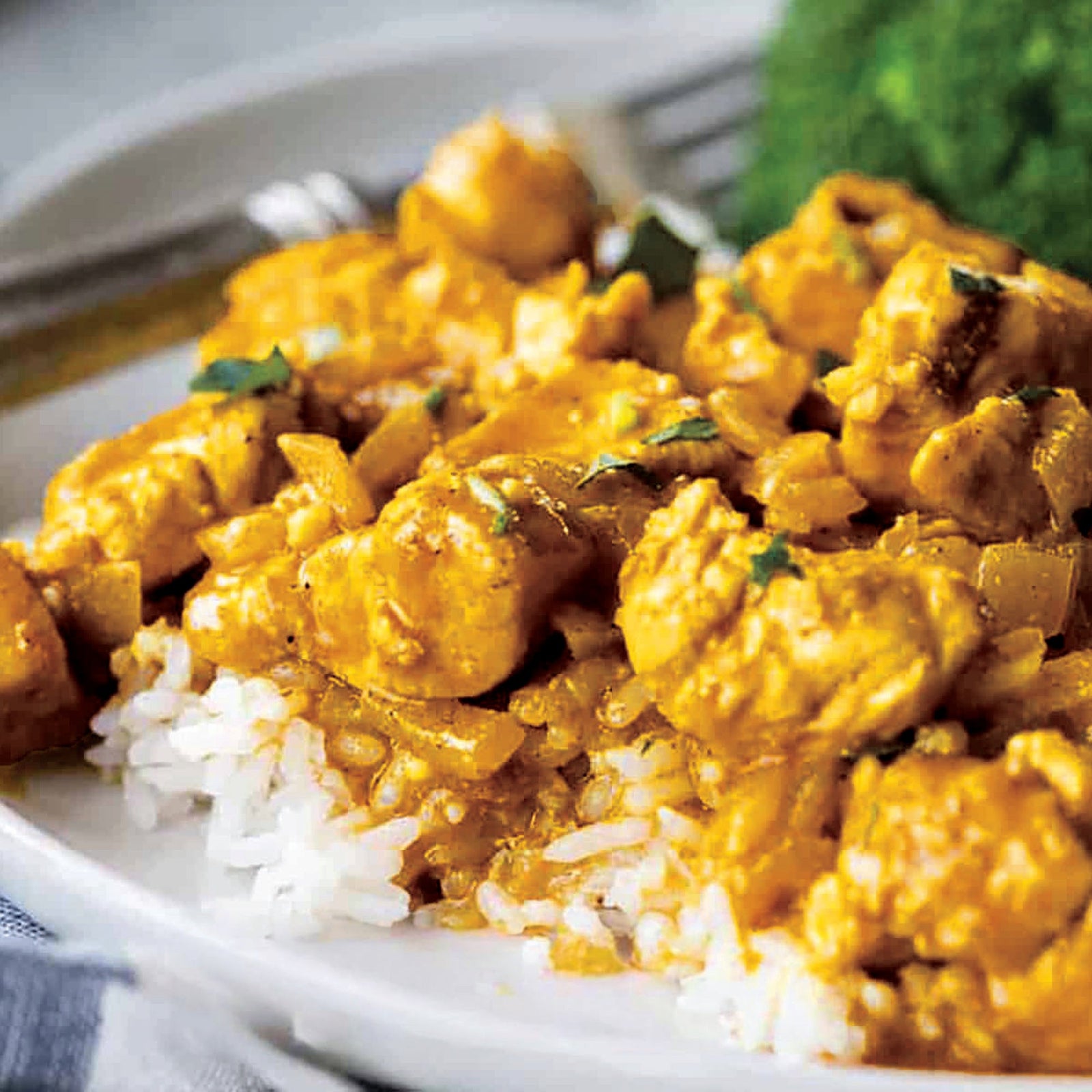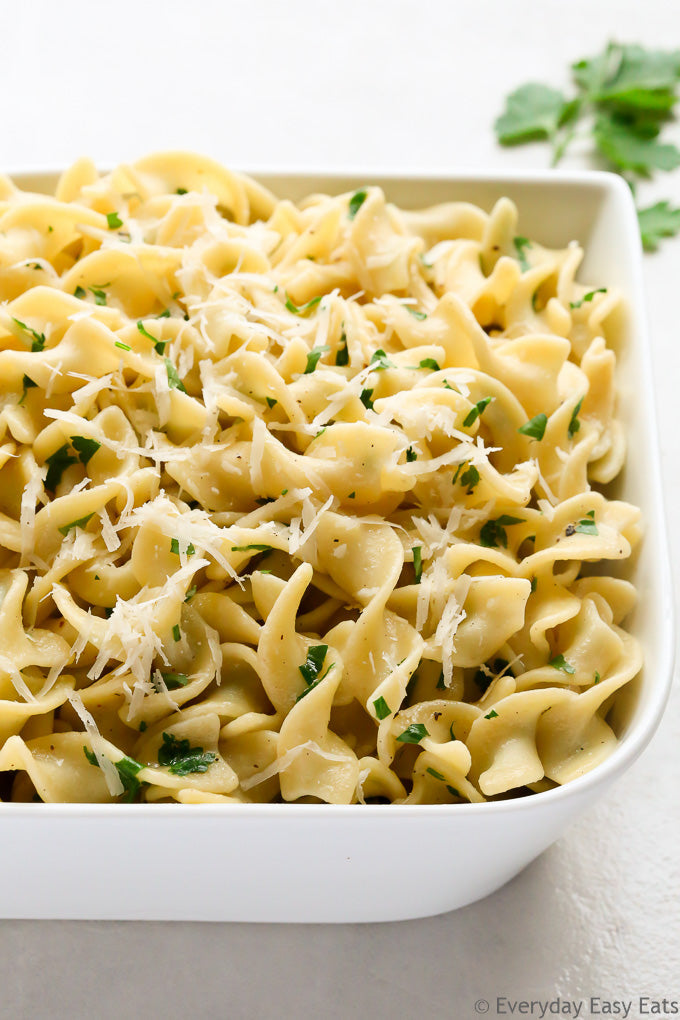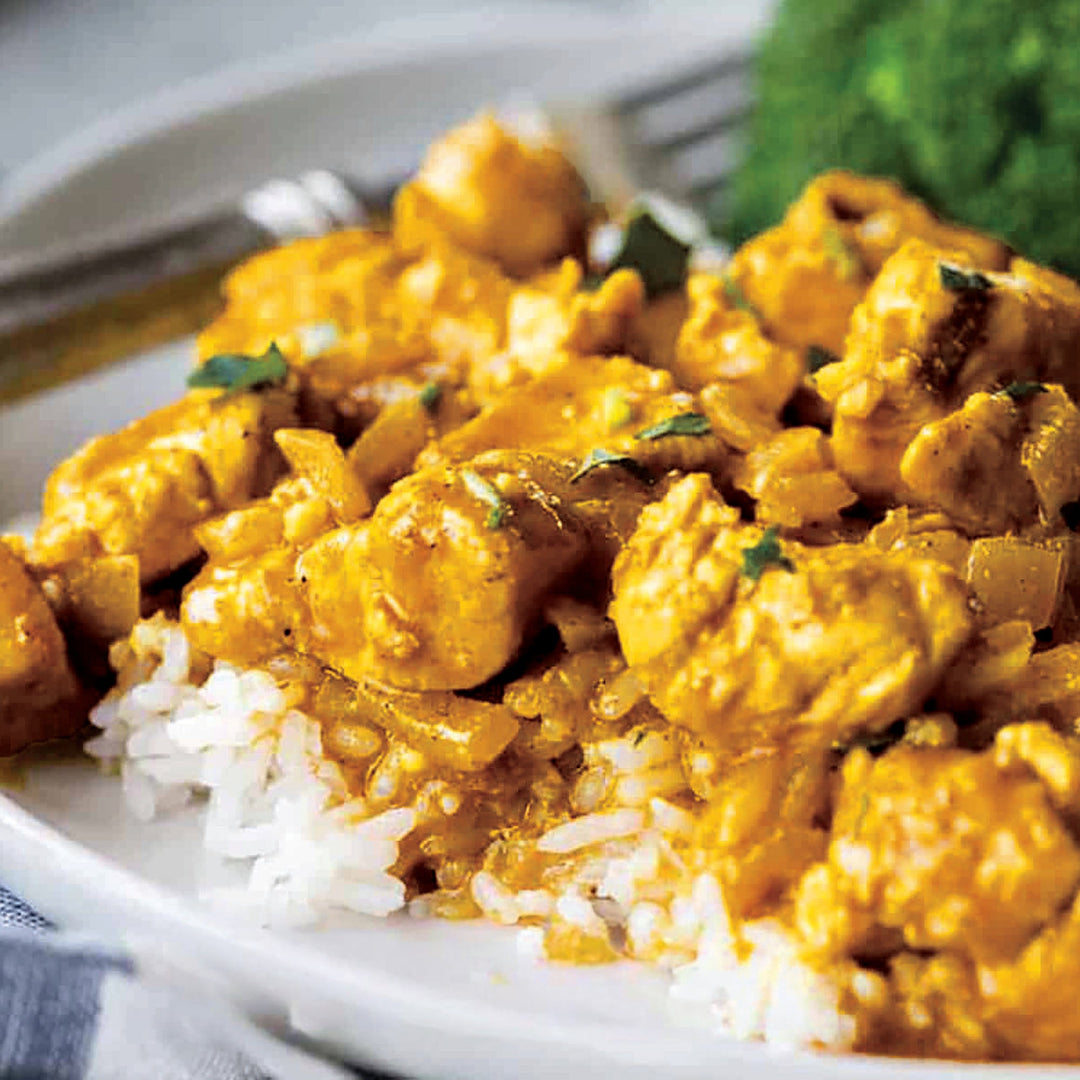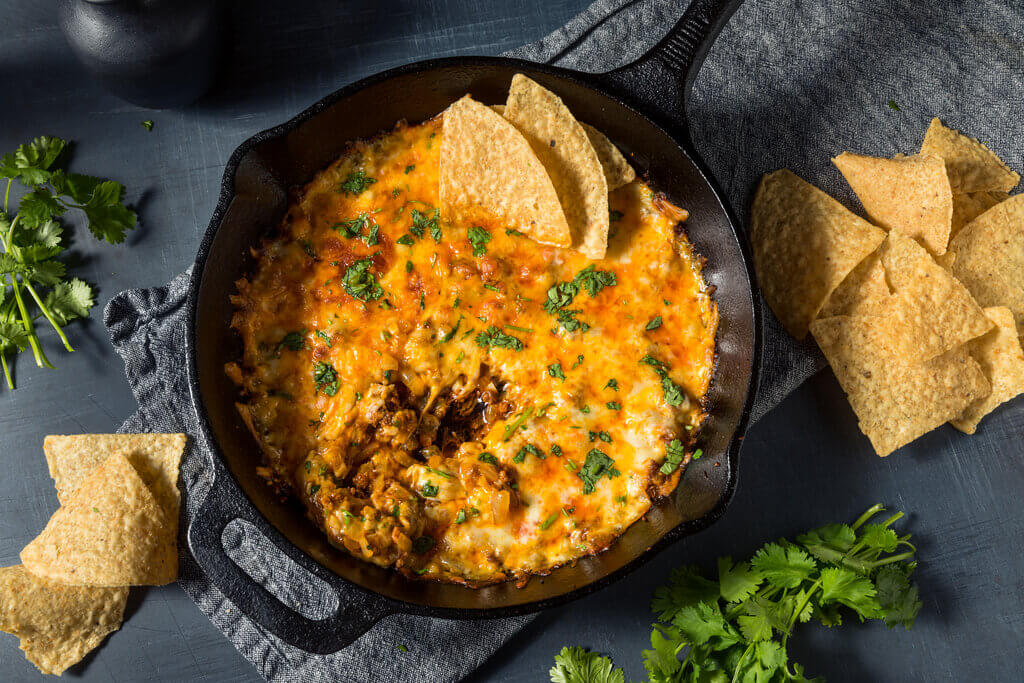The Origins and Evolution of Indian Curry

India's cuisine is as diverse as its landscapes, languages, and cultures, with each region offering its own unique flavors and culinary techniques. Among the myriad of dishes that define Indian cuisine, curry holds a special place. It's not just a dish but a narrative of India’s historical spice trade, regional nuances, and cultural amalgamation. This blog will take you on a culinary journey to explore the origins, regional variations, and evolution of curry.

The Roots of Curry
Curry, known in various parts of India as "Kari," which translates to sauce or gravy, is believed to have originated from the Eastern regions of India. The presence of turmeric, a staple in Indian cooking, gives this curry its characteristic golden hue and its name. This spice is not only prized for its color and flavor but also for its anti-inflammatory and antioxidant properties.
The use of turmeric dates back nearly 4,000 years to the Vedic culture in India, where it was used as a culinary spice and in religious ceremonies. As Indian cuisine evolved, so did the methods and ingredients used in curry. The integration of spices like coriander, cumin, and mustard seeds during the cooking process added depth and complexity to the flavor profile of the curry.
The Spice Trade Influence
India’s strategic position along ancient spice routes played a pivotal role in the evolution of its culinary traditions, including curry. Spices were among the most valuable commodities traded through these routes, not only within the Indian subcontinent but also with Babylonians, Arabs, and Egyptians. This trade led to the influx of new spices and culinary techniques into India, which were gradually incorporated into local dishes, including curry.
By the Middle Ages, curry had become a staple in Indian households, evolving with regional influences to include a variety of local ingredients. The addition of creamy elements like coconut milk in the South, the use of mustard oil in the East, and the incorporation of dried fruits and nuts in the North are testaments to the regional adaptations of the classic curry.
Health Benefits of Key Ingredients in Curry InstaBomb
The spices used in the Curry InstaBomb not only contribute to its delightful taste and aroma but also offer various health benefits. Here’s a look at some key ingredients and their benefits:
Turmeric: The star ingredient of curry, turmeric contains curcumin, a compound known for its anti-inflammatory and antioxidant properties. Regular consumption can help reduce inflammation in the body, which is beneficial for managing conditions like arthritis and heart disease.
Garlic Powder: Garlic is renowned for its health benefits, including its ability to enhance immune function. It has antibacterial and antiviral properties which can help ward off common illnesses like the cold and flu.
Ginger: Ground ginger, another staple in curry, is effective in alleviating symptoms of digestive distress. It is also known to help reduce nausea and possesses anti-inflammatory properties that can help manage pain and swelling.
Cumin: Cumin is not just a flavor enhancer; it also has several health benefits, including promoting digestion and providing the body with iron, which is crucial for energy production and immune system support.
Coriander: Often used in curry powder, coriander seeds have multiple health benefits, including lowering blood sugar levels, fighting infections, and promoting heart, brain, skin, and digestive health.
Chili Powder: While it adds a bit of heat, chili powder is also good for your metabolism. It contains capsaicin, which is known to boost metabolism and promote fat loss.
Cinnamon: This spice is not only for sweet dishes but is also a powerful addition to savory dishes like curry. Cinnamon is known for its ability to lower blood sugar and has anti-inflammatory properties.
These spices, when combined in the Curry InstaBomb, create not only a dish rich in flavors but also one that offers multiple health benefits, making it a smart choice for those looking to enjoy delicious food that is also good for their health. Whether you are seeking to combat inflammation, boost your immune system, or support your digestive health, the Curry InstaBomb is a tasty way to achieve these health goals.
Colonial Impact and the Spread Worldwide
The journey of curry from a regional Indian dish to a global culinary staple is a story deeply intertwined with historical movements, notably British colonialism. As the British established their presence in India, they became enchanted by the local cuisine. The allure of Indian spices and flavors led them to bring these culinary secrets back to Britain, fundamentally altering the course of food culture both in the UK and eventually, around the world.
The British Adaptation
Upon its introduction to the British Isles, curry underwent significant modifications to cater to milder palates. The creation of "Curry Powder" marked a pivotal moment in the Western adaptation of Indian curry dishes. This pre-made spice mix, designed to capture the essence of Indian curries in a form palatable to Europeans, was sweeter and less intense than the authentic blends used in India. Over time, this led to the development of dishes that bore the influence of Indian cooking techniques and flavors but were distinctly Western in taste and character.
Curry's Expansion Across the Globe
As the British Empire expanded, so did the reach of curry. It traveled to the far corners of the globe, finding particular resonance in Southeast Asia, where it blended beautifully with local culinary traditions.
In Thailand, curry took on a new life with the addition of local ingredients such as lemongrass, galangal, and kaffir lime leaves. Thai curry is richer and creamier, often made with coconut milk and enhanced with a touch of sweetness.
In Malaysia, known for its diverse culinary scene, curry adapted into various forms including the rich and complex "Kari Ayam," a Malaysian chicken curry that incorporates potatoes and coconut milk, flavored with a spice paste that includes indigenous ingredients such as candlenuts and belacan (shrimp paste).
In Indonesia, curry is often seen in dishes like "Kari Ayam" as well, where it features a thicker, more aromatic sauce with the addition of local spices and herbs, reflecting Indonesia's rich spice heritage.
Modern Day Popularity and Variations
Today, curry is celebrated worldwide not only for its flavor but also for its adaptability across different cultures and cuisines. It has become a beloved feature in fusion restaurants and home kitchens alike, where it continues to evolve.
In the United States and Europe, curry has been embraced within the vegetarian and vegan communities. Innovations like vegan curry, which uses plant-based substitutes and dairy-free creams, are becoming more prevalent, catering to a growing demographic mindful of health and sustainability.
In Australia, curry appears in various forms, from traditional dishes served in Thai and Indian restaurants to modern Australian cafes incorporating curry-flavored dishes as part of a cosmopolitan menu.
The global trajectory of curry is a testament to its universal appeal and the ability of food to transcend cultural boundaries. From its colonial past to its modern-day incarnations across continents, curry not only adapts to local tastes but also enriches them, making it a truly international cuisine.
Other Ways to Customize Your Curry
As the global palate continues to evolve, so does the approach to traditional dishes like curry. Modern adaptations have seen this classic dish transform to meet contemporary tastes and dietary needs, embracing a more health-conscious and versatile approach that allows for a broad range of variations.
Embracing Vegetables and Vegan Options
One of the most significant modern trends in cuisine is the shift towards plant-based eating. Curry lends itself exceptionally well to this trend due to its rich, spiced sauce that can complement a variety of vegetables and plant-based proteins. Here are some creative ways to enhance curry with vegetables and make it vegan-friendly:
Vegetable-Heavy Curry: Modern cooks often increase the vegetable content in their curries, introducing items like bell peppers, zucchini, carrots, and broccoli. These vegetables not only add color and texture but also enhance the nutritional profile of the dish.
Using Plant-Based Proteins: To make curry vegan, traditional meat is replaced with plant-based proteins such as tofu, tempeh, or seitan. Chickpeas and lentils are also popular choices, providing a hearty texture and protein boost.
Coconut Milk Replacements: For those looking to reduce their coconut milk consumption—whether for health reasons or personal preference—alternatives like almond or oat milk can be used. These provide a creamy consistency without the high fat content of coconut milk.
Creative Leftover Ideas
Curry is a versatile dish that can be transformed into various other meals with leftovers, ensuring that nothing goes to waste. Here are some inventive ways to repurpose leftover curry:
Curry Fried Rice: Mix leftover curry with rice, some extra vegetables, and a splash of soy sauce for a quick and easy fried rice dish. This is a great way to use up any extra rice and veggies you might have in your fridge.
Curry Quesadillas: Spread a thin layer of curry on a tortilla, add a sprinkle of cheese (or vegan cheese), and another tortilla on top. Cook on a skillet until the tortillas are crispy and the cheese has melted. Serve with a side of mango chutney or yogurt.
Curry Vegetable Soup: Dilute leftover curry with some vegetable broth or water, bring to a simmer, and throw in any additional vegetables you like. This can create a comforting soup that's perfect for chilly evenings.
Fusion Cuisine
Curry has also found its place in fusion cuisine, blending the boundaries between traditional Indian flavors and other global culinary traditions. Examples include:
Curry Pasta: Cook pasta of your choice and toss it with a creamy curry sauce for a delightful fusion dish that combines Italian and Indian flavors.
Curry Pizza: Use curry as a sauce base on homemade pizza, topping it with mozzarella cheese, red onions, and bell peppers for an Indian-inspired pizza night.
Curry Tacos: Fill taco shells with a mixture of curry and shredded chicken or a vegan alternative, topped with fresh cilantro, diced onions, and a squeeze of lime for a flavorful twist on traditional tacos.
These modern adaptations showcase the versatility of curry and how it can be enjoyed in various forms, catering to different tastes and dietary preferences. Whether you're a vegan, a lover of vegetables, or just looking for innovative ways to enjoy leftovers, curry offers a delicious base that can meet all these needs while providing a delightful culinary experience.
InstaBomb makes it look so easy!
In the spirit of making this beloved dish even more accessible, InstaBomb offers an innovative solution that captures the essence of traditional curry in a convenient format. With InstaBomb’s Curry meal bomb, you can enjoy the authentic flavors of this classic Indian dish with minimal effort and time. Whether you’re a busy professional looking for a quick and healthy dinner option or a curious cook eager to explore Indian cuisine, InstaBomb makes it incredibly easy to bring the rich and complex flavors of India to your table. Just add the meal bomb to your choice of protein and vegetables, and you can have a delicious, restaurant-quality curry in no time.
As we explore the origins and evolution of curry, we not only uncover the history of a dish but also the story of a nation that has influenced and been influenced by the world through its most universal language: food. Whether you are a seasoned chef or a culinary novice, diving into the world of curry with InstaBomb offers a taste of India’s rich history and its vibrant, enduring spirit, all from the comfort of your own kitchen.






